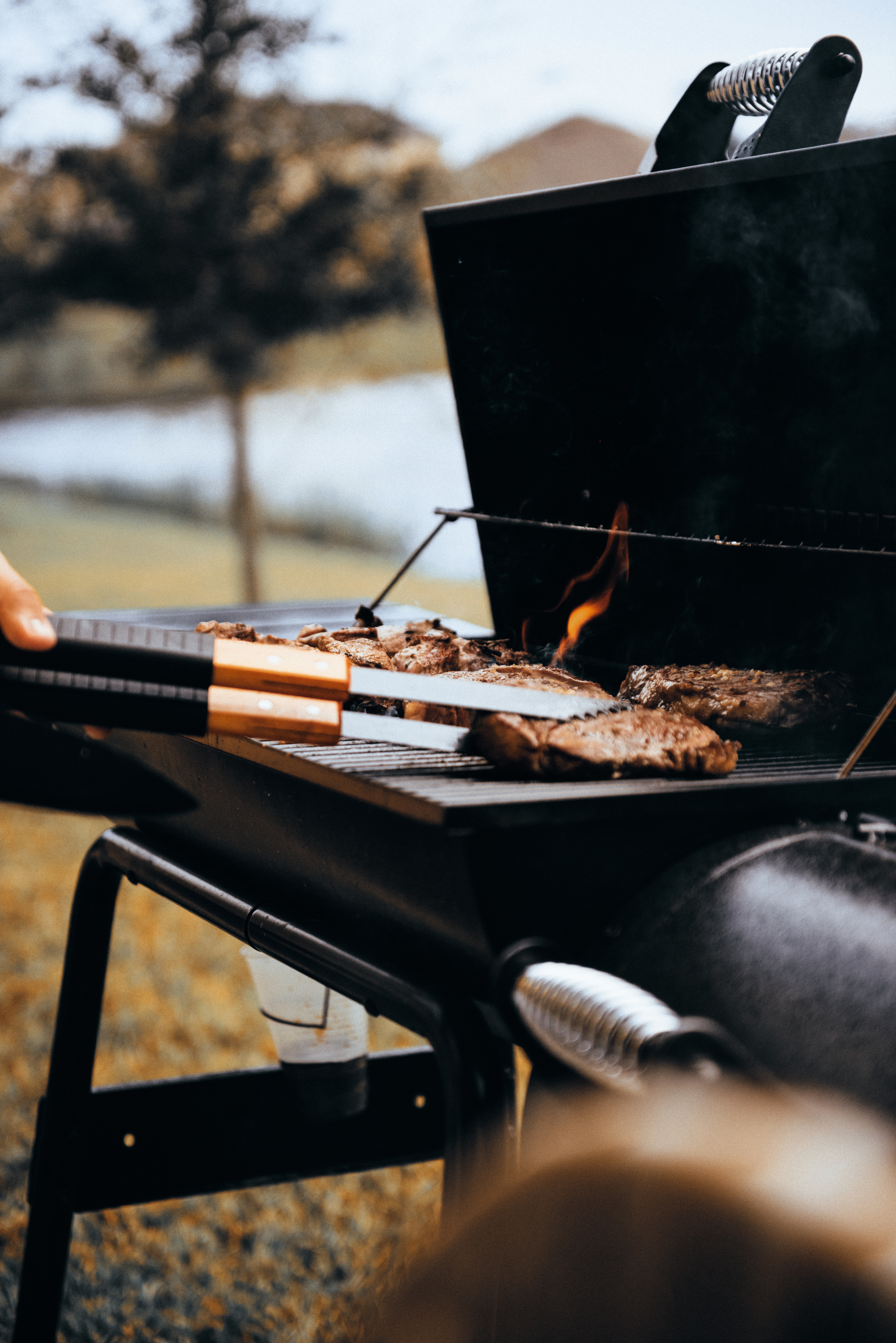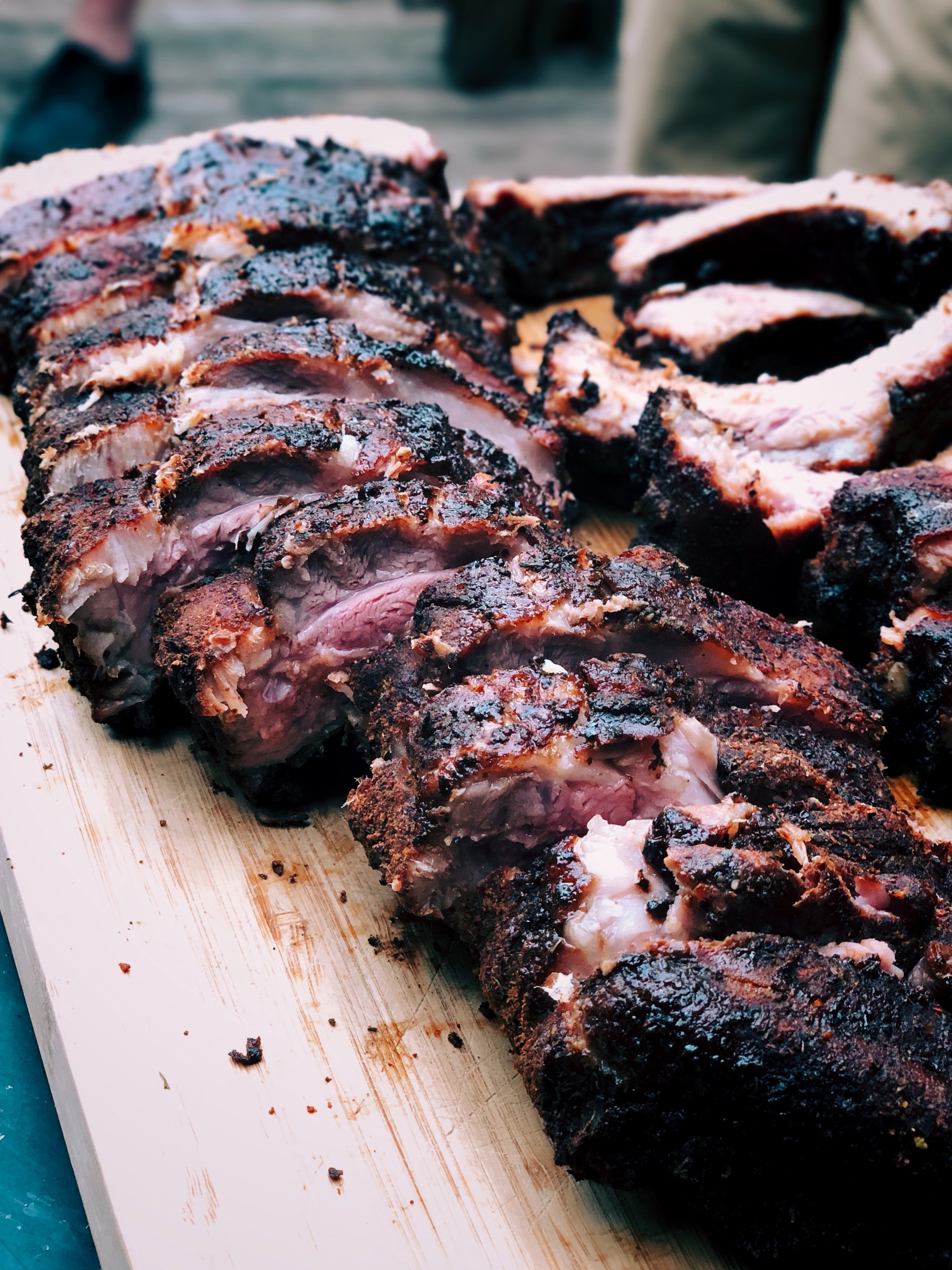Grilling Tips for Summer Cookouts

Summer is fast approaching and it’s time to dust off your grill!
Grilling Tips for Preventing Flare Ups
- When searing fatty foods, leave the grill lid in the open position.
- Try to keep your grill away from windy areas. Wind forces oxygen between the grates which can result in flare-ups.
- During cooking, if grease pods, remove food (if possible) and turn burners on high with the grill lid open until grease has burned off.
Grilling tips to Cook the perfect Burger
Ground beef with a 20 percent fat/80 percent lean ratio is best for a juicy burger with a great, meat texture. Until your burgers are fully formed, keep it away from any heat sources. Warm fat is soft and pliable; therefore, it tends to stick to your hands and work surfaces.

- Patties should be no more than 8 oz. and 1/2 inch thick. Weigh and measure the meat as you divide the patties to ensure that all your burgers will be uniform in shape and size. It will help guarantee that they all cook at the same rate.
- Season your meat before cooking. You’ll find that your burger will taste much better if every morsel is seasoned, not just the outside. Add 3/4 teaspoon salt and 1/4 teaspoon pepper to every pound of burger and knead it in gently.
- Form patties with gentle pressure and don’t over-pack. Don’t handle the meat unnecessarily.
- Form a slight depression in the middle of the patty so the edges are slightly thicker than the center. This will produce a less-round, more evenly-cooked patty.
- Start out with a clean, well-oiled grill. Burnt food particles will taint your burger and make it stick.
- Set grill to medium heat and cook for 3 to 4 minutes per side until the meat is no longer pink (unless you like it that way) or when a thermometer inserted from the side to the center reads 160° F.
- Avoid the urge to press. Yes, you see others pressing their burgers with the spatula but doing so forces the juices from the meat. Again, it’s the juices that make your burgers moist and flavorful.
- Turn them once. Years ago, I worked a grill in Wyoming. The chef taught me to never turn the steaks more than once—doing so lets the juices run out and dries out the steak. The same goes for a burger.
Grilling tips for Cooking Succulent Beef Steak
Pick the right kind of steak. Tender cuts like sirloin, tender-loin, porterhouse, New York strip, and shell steak are the best. Fibrous steaks like skirt and flank, also taste great grilled- especially when thinly slices on the diagonal (bias). Restaurant quality steaks are graded by the USDA as either ‘choice’ or ‘prime’ and have not been frozen.
- The meat should be at room temperature, seasoned lightly with kosher salt (to help draw out the proteins in the meat) and ground pepper. Lightly oil the surface with canola or another high smoke-point oil.
- Cook steaks on each side 2 to 3 minutes for a steak 1/2-inch-thick, 3 to 4 minutes for a steak 1 inch thick, 4 to 6 minutes when 1-1/2 to 2 inches thick.
- Always turn the steak with tongs or a spatula; never use a fork. The holes made by a fork allow the juices to escape.
- To check for doneness, you can use your finger pressed on the eat. Rare meat moves easily when pressed with your finger, while well done steak is stiff, and medium-rare is right in the middle. This is a skill that will develop with practice. You can also use an instant read thermometer inserted from side of the steak, preferably through any fat on the edge and only when your experience suggests they are nearly done. Otherwise, use a processional temperature charts as a guide.
- Don’t overlook the last, most important step: Let the steaks rest for 2 to 3 minutes before you serve them. This allows the juices to flow back from the center of the meat to the exterior, giving you a juicer steak.
- Always cut meat across the grain to preserve tenderness.
Grilling tips for Tender & Moist Pork

Cooking pork to 145 F with a three-minute rest time is considered safe and yields a much juicier piece of meat. One way to determine this, of course, is by using a meat thermometer. Depending on the thickness, cut, and grain of the meat and the amount of fat, muscle and bone, the cooking time for pork can vary considerably. Final cooking time to generate the proper internal temperature depends on the thickness of the meat and the heat of the grill.
Also see, Grilling Great Chicken Every Time and 8 Ways to Grill your Summer Catch).